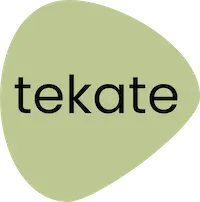For many businesses, security and compliance are treated as a box-ticking exercise. A policy is written, a plugin is added, and the subject is shelved until the next audit. But in practice, compliance and security are not things you can bolt onto a system at the end. They need to be built in from the start — woven into the design of workflows, hosting, and data management.
At Tekate, we approach compliance as an enabler rather than a burden. When systems are secure and compliant by design, they not only reduce legal risk but also enhance overall security and operational efficiency. They build trust with clients, improve resilience, and make day-to-day operations more reliable.
The Risks SMEs Face
Small and medium-sized enterprises (SMEs) often underestimate their exposure to risk. Common issues include:
- Fragmented systems – customer data spread across spreadsheets, SaaS tools, and email.
- Inconsistent handling – different teams managing personal data in different ways.
- Weak access controls – too many people with administrator privileges or shared logins.
- Lack of audit trails – no clear record of who accessed what, and when.
These gaps are not just theoretical risks. They can lead to data breaches, fines under the GDPR, and reputational damage that is far more difficult to repair.
Compliance by Design
Rather than retrofitting security, we embed compliance into every stage of system design. That includes:
- Access control and permissions – ensuring users only see the data they need. Role-based access is a core part of every workflow application.
- Audit trails – automatic logging of key actions, from client record updates to invoice approvals. These provide accountability and help with investigations.
- Secure hosting – servers built on Oracle Linux, OpenLiteSpeed, and MySQL replication, with data backed up, monitored, and encrypted in transit.
- Cookie consent and GDPR workflows – ensuring client-facing systems capture consent, honour subject access requests, and handle data deletion properly.
- Integration safeguards – when linking to platforms like Xero, Shopify, or Google Workspace, connections are secured with tokens and monitored for unusual activity.
The goal is not to make compliance visible at every turn, but to ensure it happens automatically in the background.
Examples in Practice
Consider an employment agency handling sensitive client details. A compliant system ensures that:
- CVs and applications are stored securely with access limited to authorised staff.
- Terms and conditions are digitally accepted and recorded as part of the audit trail.
- Data retention rules automatically remove or anonymise records when they are no longer needed.
In logistics, compliance takes a different shape:
- Shipment tracking must be visible to clients without exposing other customers’ data.
- Multi-currency transactions must meet financial reporting standards.
- Integrations with shipping providers require careful management of personal delivery information.
Across sectors, the principle remains the same: compliance must align with the real workflow, not sit alongside it as an afterthought.
Common Pitfalls
Businesses often fall into traps when tackling compliance:
- Treating it as a one-off project – compliance is an ongoing process, not a task to complete and forget.
- Overreliance on plugins – especially in WordPress, where a cookie banner plugin is sometimes seen as enough. True compliance requires deeper integration.
- Ignoring staff training – even the best systems fail if staff don’t understand how to handle data securely.
- Underestimating third-party risk – every integration, from email to e-commerce, is another potential vulnerability.
Recognising these pitfalls early helps avoid costly mistakes later.
Future Challenges
The compliance landscape is evolving. AI adds new complexities around transparency and explainability. International data transfers face shifting legal requirements. Cyber threats continue to grow in sophistication.
For SMEs, the challenge is staying ahead without dedicating entire teams to compliance. That’s why systems designed with security at their core are so valuable — they provide a strong foundation that can adapt as laws and risks change.
Final Reflection
Compliance is often framed as a legal necessity, but it is more than that. It is a foundation of trust, both with clients and within teams. When systems are secure and compliant by design, staff can work confidently, customers can share data without hesitation, and businesses can scale without fear of hidden vulnerabilities.
For Tekate, this isn’t about adding layers of bureaucracy. It’s about building systems that are safe, reliable, and fit for the future — from the very beginning.

